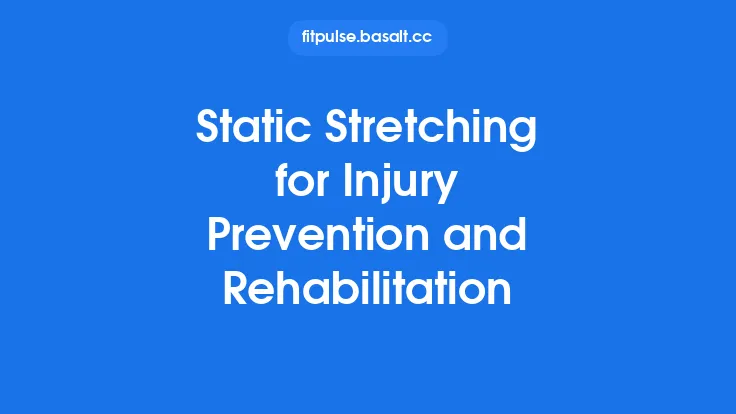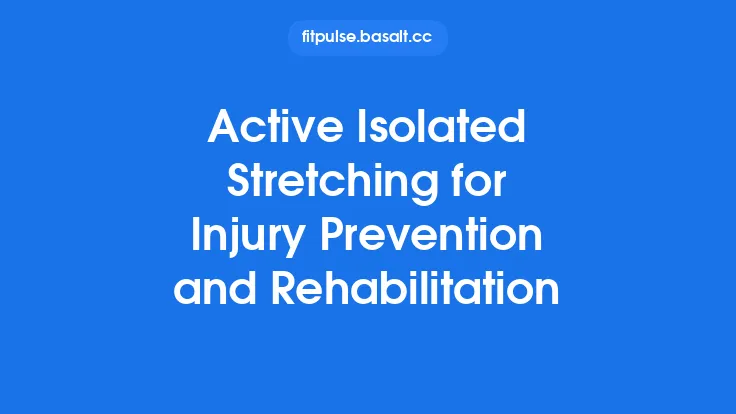Recovering from a knee or ankle injury at home can feel daunting, especially when you’re eager to get back to the activities you love. The good news is that many effective rehabilitation exercises require little more than a small space, a mat, and a few everyday items. By understanding the structures involved, applying core rehab principles, and following a structured yet flexible routine, you can safely rebuild strength, restore range of motion, and improve joint stability without stepping foot in a clinic.
Understanding Knee and Ankle Anatomy
A solid grasp of the major components of the knee and ankle helps you target the right tissues and avoid compensatory patterns that could delay healing.
Knee Joint
- Bones: Femur (thigh), tibia (shin), and patella (kneecap).
- Ligaments: Anterior cruciate ligament (ACL), posterior cruciate ligament (PCL), medial collateral ligament (MCL), lateral collateral ligament (LCL).
- Menisci: Medial and lateral fibrocartilaginous pads that absorb shock.
- Muscles/Tendons: Quadriceps (vastus medialis, lateralis, intermedius, rectus femoris) and hamstrings (biceps femoris, semitendinosus, semimembranosus) cross the joint, while the patellar tendon connects the quadriceps to the tibia.
Ankle Joint
- Bones: Tibia, fibula, and talus form the primary hinge; the calcaneus (heel) and other tarsal bones contribute to subtalar motion.
- Ligaments: Lateral complex (anterior talofibular, calcaneofibular, posterior talofibular) and medial (deltoid) ligament.
- Muscles/Tendons: Gastrocnemius‑soleus complex (Achilles tendon) for plantarflexion, tibialis anterior for dorsiflexion, peroneals for eversion, and intrinsic foot muscles for fine control.
Understanding which structures are injured guides the selection of exercises that stress the appropriate tissues while sparing those still in the early phases of healing.
Key Principles for Home‑Based Rehabilitation
- Pain‑Guided Progression – Mild discomfort (≤2/10 on a numeric pain scale) is acceptable, but sharp or worsening pain signals the need to modify or stop the activity.
- Controlled Range of Motion (ROM) – Early movements should stay within a pain‑free arc, gradually expanding as swelling subsides.
- Muscle Activation Before Load – Prioritize neuromuscular activation (e.g., quadriceps sets, ankle pumps) before adding resistance.
- Symmetry – Perform exercises on both limbs whenever possible to maintain balance and prevent compensatory overuse.
- Consistency Over Intensity – Daily, low‑to‑moderate volume sessions are more beneficial than sporadic high‑intensity bouts.
- Functional Integration – As mobility improves, embed joint movements into everyday tasks (e.g., sit‑to‑stand, step‑ups) to reinforce motor patterns.
Early Phase: Restoring Mobility and Reducing Swelling
Goal: Minimize edema, maintain joint nutrition, and gently re‑establish ROM.
| Exercise | Description | Reps/Duration |
|---|---|---|
| Ankle Pumps | While seated, point toes down (plantarflex) then pull them toward you (dorsiflex). | 20‑30 cycles, 3×/day |
| Quadriceps Sets | Sit with leg extended; tighten the front thigh, press the knee down into the floor, hold. | 10‑15 s hold, 10 reps, 3×/day |
| Heel Slides (Knee) | Lying supine, slide the heel toward the buttocks, then straighten. Keep movement smooth. | 10‑15 reps, 2‑3 sets |
| Towel Stretch (Ankle Dorsiflexion) | Loop a towel around the ball of the foot, gently pull toward you while keeping knee straight. | 20‑30 s hold, 3 reps each side |
| Patellar Mobilizations | Gently move the patella medially and laterally with the fingertip while the leg is relaxed. | 10‑15 s each direction, 2 sets |
These activities can be performed multiple times a day, especially after periods of rest (e.g., after sleep or prolonged sitting). Elevating the limb and applying intermittent ice (15‑20 min) after sessions further assists swelling control.
Strengthening the Knee: Bodyweight and Simple Tools
Once pain is minimal and ROM is near normal, focus shifts to rebuilding muscular support.
1. Straight‑Leg Raises
- Setup: Lie on your back, non‑injured leg bent, injured leg straight.
- Execution: Engage the quadriceps, lift the leg 30‑45 cm, hold 2 s, lower slowly.
- Progression: Add ankle weight (e.g., a small sandbag) once 15‑20 reps are easy.
2. Mini‑Squats
- Setup: Stand with feet hip‑width, back against a wall for support.
- Execution: Bend knees to ~30°, keep knees tracking over toes, pause 1 s, rise.
- Tip: Keep weight on the heels; avoid letting the knees collapse inward.
3. Step‑Downs
- Setup: Use a sturdy step (15‑20 cm).
- Execution: Place the injured leg on the step, slowly lower the opposite heel toward the floor, then return.
- Progression: Increase step height or add a slow eccentric phase (3‑4 s down).
4. Hamstring Bridges
- Setup: Lie supine, knees bent, feet flat.
- Execution: Lift hips until shoulders‑to‑knees form a straight line, squeeze glutes, hold 2‑3 s, lower.
- Variation: Perform single‑leg bridges for added challenge.
5. Wall Slides
- Setup: Back against a wall, feet a few inches away, knees slightly bent.
- Execution: Slide down the wall to a comfortable depth (≈45°), hold 2 s, slide back up.
- Benefit: Engages quadriceps and gluteal stabilizers without axial loading.
Ankle Stabilization Exercises
Ankle rehab emphasizes proprioception, muscular endurance, and controlled motion.
1. Alphabet Tracing
- Setup: Sit with the leg extended, foot off the ground.
- Execution: “Write” the alphabet in the air using the big toe, keeping the ankle stable.
- Purpose: Improves range and neuromuscular control.
2. Theraband‑Free Dorsiflexion/Plantarflexion
(If a light resistance band is unavailable, use a rolled towel.)
- Setup: Loop the towel around the forefoot, hold the ends.
- Execution: Pull the foot toward you (dorsiflex) and then push away (plantarflex) against the towel’s resistance.
- Reps: 15‑20 each direction, 2‑3 sets.
3. Single‑Leg Stance
- Setup: Stand on the injured leg, lightly touch a wall for balance if needed.
- Execution: Hold for 30 s, progress to 45‑60 s.
- Progression: Close eyes, stand on a folded towel, or perform gentle head turns.
4. Heel‑to‑Toe Walks
- Setup: In a clear hallway, walk forward placing the heel directly in front of the toes of the opposite foot.
- Execution: 10‑15 steps forward, then reverse.
- Benefit: Reinforces ankle dorsiflexion and plantarflexion coordination.
5. Calf Raises (Both Legs)
- Setup: Stand with feet hip‑width, hands on a chair for support.
- Execution: Rise onto the balls of the feet, hold 1 s, lower slowly.
- Progression: Perform on a step for greater range, then shift to single‑leg raises.
Integrating Balance and Proprioception
Joint stability is not solely a product of muscle strength; the nervous system’s ability to sense joint position is equally vital.
- BOSU/Balance Pad Alternatives: Use a folded towel or a pillow to create an unstable surface.
- Dynamic Reach: While standing on the injured leg, reach forward, sideways, and backward with the opposite hand, maintaining balance.
- Clock Exercise: Imagine a clock on the floor; step to each “hour” (12, 3, 6, 9) while keeping the injured foot planted.
- Perturbation Training: Have a partner gently push the shoulders from different angles; resist without stepping.
These drills should be performed after the basic strengthening phase, ideally 3‑4 times per week, to embed joint awareness into everyday movement patterns.
Designing a Home Routine: Frequency, Sets, and Reps
A balanced program typically includes:
| Component | Frequency | Sets | Reps / Duration |
|---|---|---|---|
| ROM & Mobility (e.g., ankle pumps, heel slides) | Daily | — | 15‑20 cycles each |
| Activation (quadriceps sets, glute squeezes) | Daily | 2‑3 | 10‑15 s hold |
| Strength (mini‑squats, bridges, step‑downs) | 3‑4 × week | 2‑3 | 10‑15 reps |
| Ankle Stabilization (single‑leg stance, alphabet) | 3‑4 × week | 2‑3 | 30‑60 s hold / 1 min |
| Balance/Proprioception (clock, dynamic reach) | 2‑3 × week | 2‑3 | 5‑10 reps each direction |
Progression Checklist – Move to the next difficulty level when you can complete the prescribed sets with ≤1 / 10 pain, maintain proper form, and feel confident in the movement. Typical progression intervals range from 5‑7 days for early exercises to 2‑3 weeks for strength work, but individual variability is expected.
Monitoring Your Progress Safely
Even without formal metrics, simple self‑assessment tools keep you on track:
- Pain Diary: Record pain level before and after each session; a downward trend indicates adaptation.
- Range Tracker: Use a goniometer app on your phone to log knee flexion/extension and ankle dorsiflexion/plantarflexion weekly.
- Functional Benchmarks: Time how long you can hold a single‑leg stance, or count the number of step‑downs completed without fatigue.
- Video Review: Record yourself performing key exercises; compare form over weeks to spot compensations.
If you notice increasing swelling, persistent sharp pain, or a plateau lasting more than three weeks, it’s prudent to consult a healthcare professional.
Common Pitfalls and How to Avoid Them
| Pitfall | Why It Happens | Prevention |
|---|---|---|
| Skipping Warm‑Up | Rushing into strengthening can overload stiff tissues. | Perform 5‑10 min of gentle cardio (marching in place) and dynamic stretches before each session. |
| Over‑relying on Pain Medication | Masks warning signals, leading to overuse. | Use medication sparingly; prioritize movement quality and pain monitoring. |
| Doing Too Much Too Soon | Enthusiasm leads to premature loading. | Follow the progression checklist; add one new exercise at a time. |
| Neglecting the Opposite Limb | Unilateral focus creates imbalances. | Include bilateral exercises and always work the non‑injured side. |
| Using Improper Surfaces | Hard floors increase joint impact. | Exercise on a yoga mat or carpeted area; use a folded towel for unstable surfaces. |
When to Seek Professional Help
Home rehabilitation is powerful, yet certain signs warrant a clinician’s evaluation:
- Persistent Instability – Frequent “giving way” episodes despite balance work.
- Swelling That Doesn’t Subside – More than 48 h after activity, or recurrent after rest.
- Sharp, Shooting Pain – Especially if accompanied by numbness or tingling.
- Inability to Achieve Functional Milestones – E.g., unable to walk without limp after 4‑6 weeks of consistent home work.
- Post‑Surgical Concerns – Any incision issues, excessive drainage, or fever.
A physical therapist can provide manual techniques, tailored progression, and equipment (e.g., balance boards) that complement your home program.
By adhering to these evidence‑based principles, selecting appropriate exercises, and listening to your body, you can confidently navigate the road to recovery from knee and ankle injuries—all from the comfort of your own home. Consistency, patience, and a focus on quality movement will lay the foundation for a resilient joint that’s ready for the challenges ahead.





